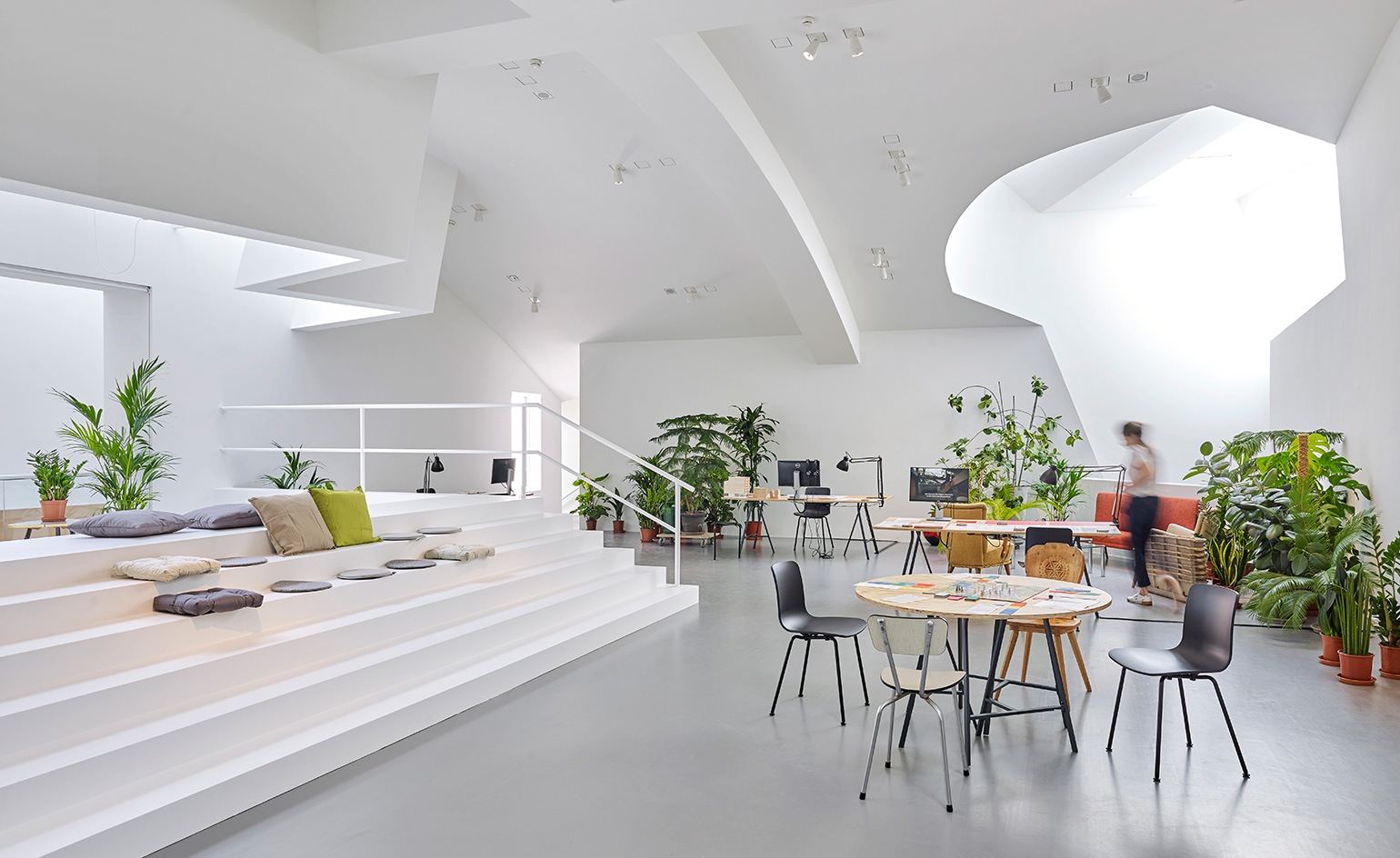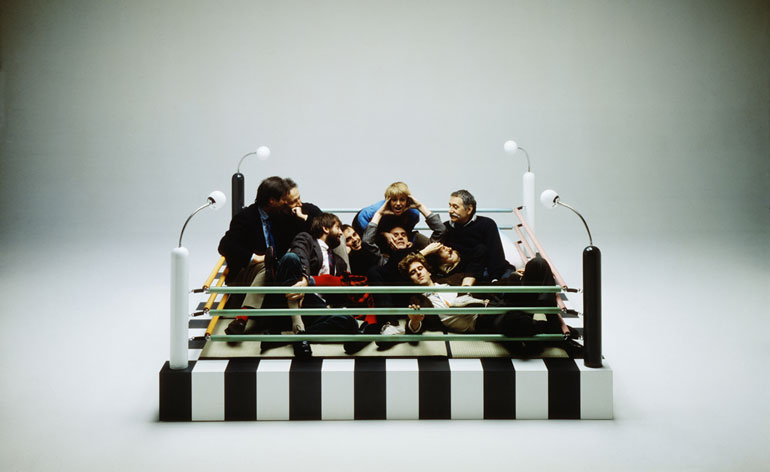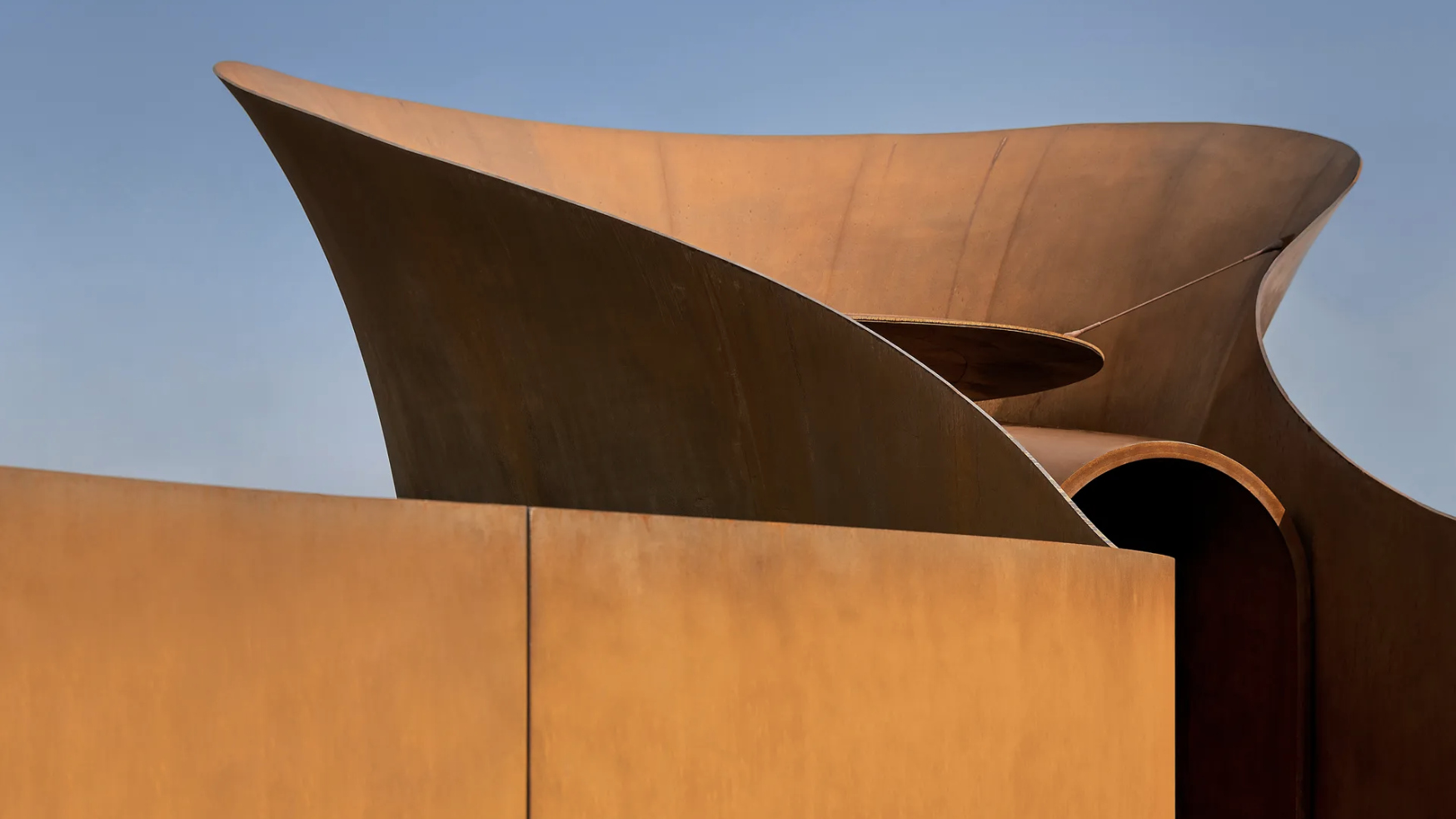All together now: the silent revolution of communal architecture

This year’s edition of the annual Vitra summer party in Weil am Rhein during Art Basel was a sun-drenched celebration of togetherness as some 3,000 members of the design, architecture and art crowds, plus sundry friends and business partners from all over the world gathered on the company’s campus lawns to eat, drink and make merry.
Basel city is packed during the art fair and hotels are often booked up months ahead, which means there is usually a last-minute flurry on social media of messages from people seeking room or flat shares. It’s all very communal but temporary before most of us go back to our homes in an equally limited, high-cost market governed by skyrocketing real estate prices.
The current exhibition at the Vitra Design Museum, ‘Together! The New Architecture of the Collective’, is about communal living of a more permanent kind. The first section of the show deals with historical experiments in collective living such as Robert Owen’s proto-socialist, paternalistic New Harmony project from 1825 in rural Indiana, or Bruno Taut and Martin Wagner’s 1925 modernist Hufeisensiedlung estate on the outskirts of Berlin, but then moves swiftly on to the more politically-motivated communes established in the 1960s and 70s that were all about rejecting ideas of individual ownership and bourgeois ideals, that often set the new communards in direct confrontation with the state.

Unité d'Habitation, Fondation Le Corbusier, VG Bild Kunst
But then the exhibition moves swiftly on to the collective impulses of the internet generation, where communal living now seems a logical conclusion of shared data, shared cars, crowdsourcing, couch-surfing and the like, and talks about a whole range of architectural projects that experiment with proportions of public/private space in an urban environment and reject the conventional model of housing designed for nuclear family units.
The show’s curators, Andreas and Ilka Ruby and architects EM2N, have built a 1:24 scale cityscape of models of 21 existing contemporary buildings from around the world that blur the boundaries of ‘family’ as well as the borders between residences and neighbourhoods. These buildings are not about gated communities, but about opening up ground floor areas for small business commerce and social amenities and designating rooftops as publically accessible communal gardens. Visitors can move around and between the models to get an immersive sense of how a more communal urban environment, by design, could work in what the curators call: ‘the city as a public living room’.
They then address the idea of ‘collective privacy’ with a 1:1 model of a ‘cluster apartment’ whose floor plan defines a number of micro apartments, each with its own bedroom, bathroom, kitchenette and living space, clustered around a central and much larger communal living room and cooking/dining area. The theoretical advantages of such a living constellation in contemporary society are obvious: single parent with small child who no longer needs to worry about a babysitter, an elderly person who no longer has to live alone, a student who perhaps helps with the shopping, a busy professional who can come home to a ‘family’ instead of just the cat and a houseplant to talk to.

Installation view.
Obviously this is all pretty utopian. Such housing projects demand endless discussion, negotiation and compromise, not just to build but to live in and maintain. One only has to think of all those modernist social living projects that ended up as ghettos or under the wrecker’s ball or gentrified beyond recognition and accessibility for the very people they were designed for. No organism thrives unless you feed and nurture it. Le Corbusier’s archetypical Wohnmaschine blocks of flats, for example, have long lost the rooftop nursery schools, communal laundry and social spaces, shops and bus stop in front of the door that made them initially so appealing for a mixed demographic of residents. Without these common space amenities they are just a bunch of boxes perched on top of each other, but these amenities were the first to fail back then.
Today, it could be argued, things are different: we have got used to sharing and being communal in new ways thanks to the internet. In addition the global population is aging, there are more singles than ever before, families are smaller or non-existent, we are far more mobile, less prissy about privacy and also rather less weighed down by bulky possessions than we used to be just a couple of decades ago. The current climate is pretty much ideal for a rethink of the collective.
In the final section of Together!, the exhibition gets into the nitty gritty of how to make it happen. On five desks it shows the evolution of the financing concepts and design processes of five different models: the Baugruppe (a building collective), the cooperative, the housing association, a private development and a blend of housing co-op and investment fund.
All in all this is a highly informative, if rather idealistic (but isn’t that the point?), exhibition about a topic that affects most of us particularly acutely right now: how are we going to live? It is easy to think of a lot of places and people that would benefit from its pragmatic clarity in pointing a highly inclusive way forward towards a future that cares more about quality of life for residents.

Installation view of 'Together! The New Architecture of the Collective’ at Vitra Design Museum.

Wohnpark Alt Erlaa, Vienna, by 85 Architektur, 1973.

Yokohama Apartment, Yokohama, by Osamu Nishida, Erika Nakagawa, Tokyo, 2009.

Installation view.

Autonomes Jugendzentrum Ajz, Zürich, 1980-82.

Archival photograph of a 'Kommune

Installation view.

Common room, in Haus J, Genossenschaft Mehr Als Wohnen, Zurich, by Pool Architekten, 2014.

Bibliothek Cooperative Kalkbreite, by Maler Sigrist Architekten, 2014. Courtesy of Maller Sigrist Architekten

Gemeinschaftsküche in the Sargfabrik, Vienna, 1992-96.

LT Josai, Nagoya Naruse, by Inokuma Architects.
INFORMATION
‘Together! The New Architecture of the Collective’ is on view until 10 September. For more information, visit the Vitra Design Musuem website
ADDRESS
Vitra Design Museum,
Charles-Eames-Strasse 2
D-79576 Weil am Rhein
Receive our daily digest of inspiration, escapism and design stories from around the world direct to your inbox.
-
 The new Tudor Ranger watches master perfectly executed simplicity
The new Tudor Ranger watches master perfectly executed simplicityThe Tudor Ranger watches look back to the 1960s for a clean and legible design
-
 This late-night hangout brings back 1970s glam to LA’s Sunset Boulevard
This late-night hangout brings back 1970s glam to LA’s Sunset BoulevardGalerie On Sunset is primed for strong drinks, shared plates, live music, and long nights
-
 How Memphis developed from an informal gathering of restless creatives into one of design's most influential movements
How Memphis developed from an informal gathering of restless creatives into one of design's most influential movementsEverything you want to know about Memphis Design, from its history to its leading figures to the pieces to know (and buy)
-
 Doshi Retreat at the Vitra Campus is both a ‘first’ and a ‘last’ for the great Balkrishna Doshi
Doshi Retreat at the Vitra Campus is both a ‘first’ and a ‘last’ for the great Balkrishna DoshiDoshi Retreat opens at the Vitra campus, honouring the Indian modernist’s enduring legacy and joining the Swiss design company’s existing, fascinating collection of pavilions, displays and gardens
-
 Alvar Aalto: our ultimate guide to architecture's father of gentle modernism
Alvar Aalto: our ultimate guide to architecture's father of gentle modernismAlvar Aalto defined midcentury – and Finnish – architecture like no other, creating his own, distinctive brand of gentle modernism; honouring him, we compiled the ultimate guide
-
 Visit Khudi Bari: a 'little house' by Marina Tabassum, joining the Vitra Campus of architectural marvels
Visit Khudi Bari: a 'little house' by Marina Tabassum, joining the Vitra Campus of architectural marvelsKhudi Bari by Marina Tabassum has been unveiled at Vitra Campus, its installation adding to the site’s collection of architectural marvels
-
 Iwan Baan exhibition travels the world through 'moments in architecture'
Iwan Baan exhibition travels the world through 'moments in architecture'Iwan Baan: Moments in Architecture is a panoramic view of global architecture on display at the Vitra Design Museum
-
 Tane Garden House at Vitra Campus brings together nature and memory
Tane Garden House at Vitra Campus brings together nature and memoryTane Garden House by Atelier Tsuyoshi Tane Architecture launches at the Vitra Campus in Weil am Rhein, Germany
-
 Umbrella House by Kazuo Shinohara opens at Vitra Campus
Umbrella House by Kazuo Shinohara opens at Vitra CampusThe Umbrella House by Kazuo Shinohara is installed at the Vitra Campus in Weil am Rhein
-
 Balkrishna Doshi exhibition opens at Vitra Design Museum
Balkrishna Doshi exhibition opens at Vitra Design Museum -
 Home depot: Herzog & de Meuron latest addition to the Vitra Campus
Home depot: Herzog & de Meuron latest addition to the Vitra Campus